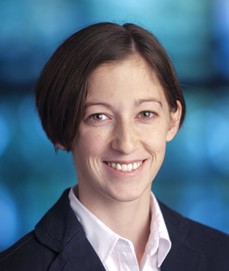Danielle Bassett on Understanding Knowledge Networks in the Brain

As a network neuroscientist, Danielle Bassett, Eduardo D. Glandt Faculty Fellow and Associate Professor in the Department Bioengineering, brings together insights from a variety of fields to understand how the brain’s connections form and change: mathematics, physics, electrical engineering and developmental biology, to name a few. Bassett’s recent work on the learning process also draws from linguistics, educational theory and other domains even further afield.
The intersection and interaction of knowledge from multiple sources doesn’t just describe Bassett’s methodology; it’s at the heart of her research itself.
At the Society for Industrial and Applied Mathematics’ Annual Meeting last year, Bassett provided an address on how the structure of knowledge networks can influence what our brains can do when it comes to learning new things.

Now, at SIAM News, Mathew R. Francis explains Bassett’s research into this phenomenon, and how her lecture was itself an example of how these knowledge networks form.
Citing early 20th century progressive educational reformer John Dewey, she explained that the goal of a talk — and learning in general — is to map concepts from the speaker/teacher’s mind to those of his or her listeners. When the presenter is successful, the audience gains new conceptual networks.
More generally, Bassett explored how humans acquire knowledge networks, whether that process can be modeled mathematically, and how such models may be tested experimentally. Fundamental research on brain networks can potentially facilitate the understanding and treatment of conditions as diverse as schizophrenia and Parkinson’s disease.
Continue reading Francis’ article on SIAM News. Audio and slides of Bassett’s lecture are also available at SIAM.
